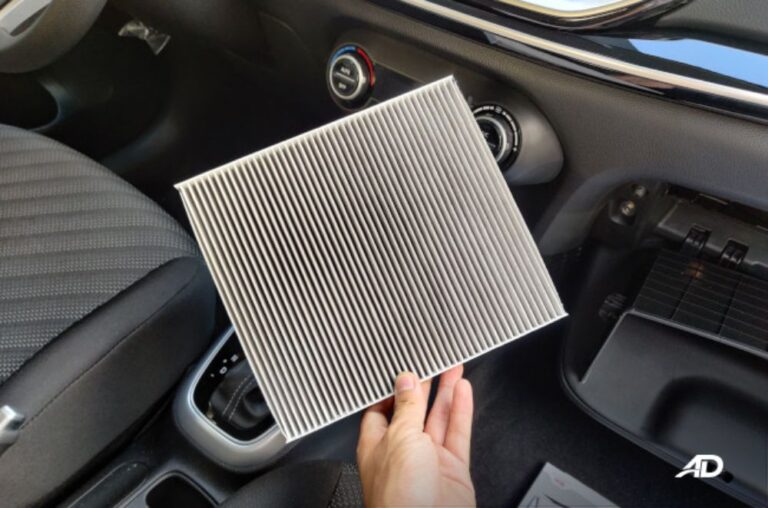
You probably do not pay much attention to how easy your car is to steer. When you want to make a right turn, you simply turn the steering wheel, and it goes in the direction. You are lucky if you have never driven a car without power steering.
Power steering is what helps you turn your vehicle with ease. Without it, it takes a lot of muscle to turn your steering wheel. If you are interested in learning a little more about power steering, you have come to the right place.
What is Power Steering Fluid?
Power steering fluid is a hydraulic fluid that is used within the steering system. It creates a hydraulic link from the steering wheel to the front wheels. This reduces the effort a driver needs to turn the wheels of the car.
The power steering fluid lubricates all the moving parts in the steering system. In addition, it prevents corrosion in the power steering components and reduces foaming to keep the system working correctly.
Types of Power Steering Fluid for Vehicles
There are different types of power steering fluids. While there are some differences in each variety, they all allow the driver to turn the steering wheel easily.
1. Universal Power Steering Fluid
Power steering fluid is critical to the transmission of power within the power steering system. The fluid is pressurized, and it reduces the effort needed to turn the steering wheel.
In addition, it helps to lubricate the parts of the system, including pistons, valves, and power steering pumps. Universal power steering fluid is used in most modern vehicles. This type of fluid is compatible with most make and models.
However, some manufacturers feel that universal power steering fluid needs some additives to provide protection from corrosion. Additives can also improve the fluid’s ability to lubricate the seal and pump. They can also help the system respond and perform better because it reduces friction.
When using a universal fluid, you must verify its viscosity and chemical compatibility with the power steering fluid being used in the power steering system. If the properties do not match, the fluid will not be as beneficial as it should be.
Power steering fluid is distinctive in color and smell. It is usually pink, amber, or clear and smells like a burnt marshmallow.
2. Automatic Transmission Fluid
Automatic transmission fluid can also be used in some power steering systems. There are a variety of automatic transmission fluids, such as Mercon, Dexron, and Type F, that can be used as an alternative to power steering fluid.
Domestic vehicles, like GM, Ford, and Chrysler, used automatic transmission fluid as power steering fluid until the mid-90s. You should check with a knowledgeable technician before you substitute automatic transmission fluid for power steering fluid.
Depending on the type of automatic transmission fluid, it could be green, gray, brown, purple, or red. It tends to have a sweet smell to it.
3. Synthetic Power Steering Fluid
Synthetic power steering fluid comes in many different varieties and is engineered in a lab. It is intended for specific steering systems and types of vehicles.
Many European and Japanese vehicles require a higher standard of power steering fluid, which makes a high performing synthetic power steering fluid perfect for those vehicles.
Synthetic steering fluid is an excellent choice because it flows smoothly at lower temperatures while reducing friction and increasing lubrication in the pump. This enables the parts to last for a longer period of time.
4. Non-Synthetic Mineral Power Steering Fluid
Non-synthetic mineral power steering fluid can be used in place of automatic transmission fluid. This is an all-purpose hydraulic fluid formulated for central hydraulic systems.
It helps systems like rear axle steering, level control, hydro-pneumatic suspension, shock absorbers, and power steering. Non-synthetic mineral power steering fluid is green in color. It has high thermal stability and provides oxidation.
It also provides protection against corrosion and wear and tear. This gives you longer oil and equipment life. It also helps with smoother shifting and steering at lower temperatures.
FAQs
When Should You Change Your Power Steering Fluid?
Your power steering fluid should be changed approximately every five years or 50,000 miles. You want to follow the guidelines outlined in your owner’s manual. That may provide a different type of schedule.
When you change your power steering fluid or flush out your power steering system, it helps prolong the life of all the other steering components.
It would be best if you also replaced the power steering fluid when it is dark in color. In addition, when it contains visible dirt, debris, sludge, or other contaminants are visible, you should replace it.
Can I Drive If There Is No Power Steering Fluid?
Yes, you can actually drive your vehicle without having any power steering fluid in it. However, you probably do not want to. It is critical to remember that power steering fluid helps you steer your car.
In addition to that, it can help protect your vehicle from wear and tear. When you drive without power steering fluid, you are potentially damaging the pump, rack, and pinion in your car.
Can I Drive My Vehicle If the Power Steering Fluid Is Low?
As mentioned above, if you drive with a low amount of power steering fluid in your car, you are putting your vehicle at just as much risk as you would driving it without a power steering fluid. You may end up damaging your pump in this scenario.
Your car will not physically prevent you from driving your vehicle with low amounts of power steering fluid, but it is not the best idea. When the power steering fluid levels drop in your vehicle, your pump will be dry.
You also end up with a high amount of friction and level. This ultimately can lead to high repair bills.
Is There A Time Limit On Long You Can Drive With Low Power Steering Fluid?
The short answer is as little as possible. It is not a good idea to drive around with low power steering fluid. The shorter amount of time you do so, the less damage you are doing to your car.
The power steering fluid provides lubricant for the steering pump. This protects your steering pump from overheating because it keeps it cool. The bottom line is you want to replace and get your power steering fluid to appropriate levels as soon as you can.
Is It Possible For the Power Steering Fluid To Leak?
Yes, actually, one of the most common problems with a power steering system is fluid leaking. It can leak from the hoses and hose connections, the power steering pump, or the power steering gear or steering rack.
A commonplace for leaks is the end seals on a power steering rack or the seals at the O-rings located in the spool valve assembly.
One of the ways you can tell if you have a power steering fluid leak is by having spots on your driveway or garage floor. You may also see a drop in the fluid level in the power steering pump reservoir. These are both signs that you may have a leak somewhere.
You may also notice that the pump starts making noise. Steering may become more difficult as you begin to lose steering assistance because more air is being pulled into your steering system.
Can Additives Be Used In Power Steering Fluid?
Yes, additives may be beneficial when there is a leak of your power steering fluid. There are many aftermarket additives for power steering fluid that may be able to slow down a leak. They may also be able to stop a leak temporarily.
These additives are conditioners for seals that help old and aging seals expand, which slows down any leaks. However, it is essential that you understand that it is a temporary fix.
It is not intended to last a long time or be a permanent solution. You will still need to replace or repair the parts that are leaking.
Aftermarket additives for power steering fluid may contain modifiers for friction. They help to quiet noisy pumps. However, this is also intended to be a temporary fix and not a permanent solution.
You still need to determine why your system is being so noisy and address those problems. For example, you may have air in the system. It could also be that the control valve or pump is wearing and needs replacement.










